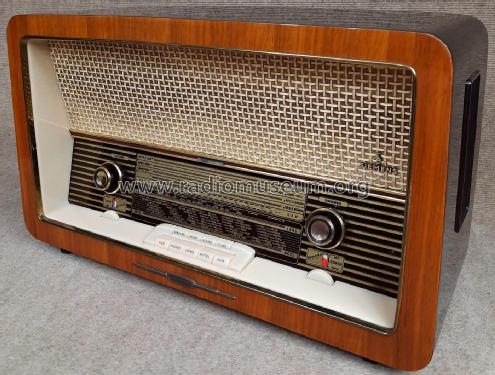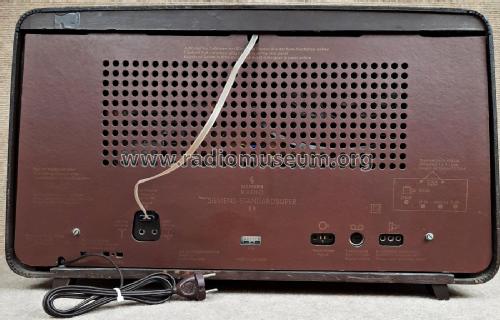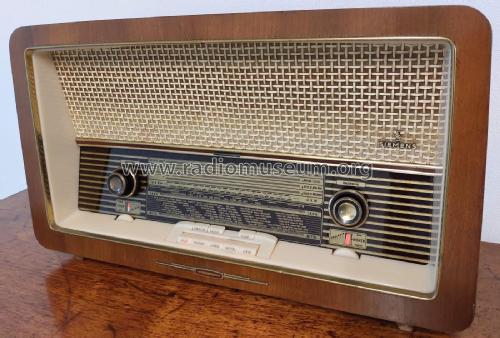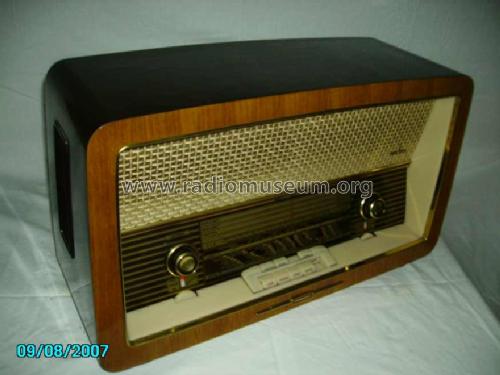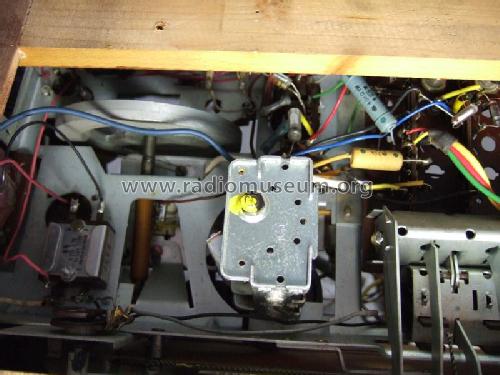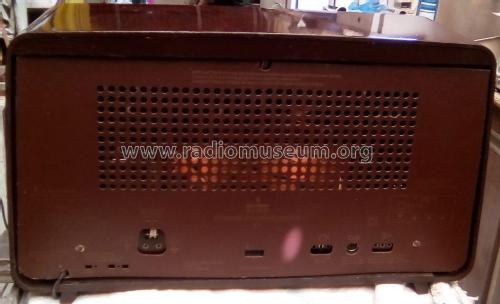- Paese
- Germania
- Produttore / Marca
- Siemens (& Halske, -Schuckert Werke SSW, Electrogeräte); Berlin, München
- Anno
- 1959/1960
- Categoria
- Radio (o sintonizzatore del dopoguerra WW2)
- Radiomuseum.org ID
- 22167
Clicca sulla miniatura dello schema per richiederlo come documento gratuito.
- Numero di tubi
- 6
- Principio generale
- Supereterodina (in generale); ZF/IF 460/10700 kHz
- N. di circuiti accordati
- 6 Circuiti Mod. Amp. (AM) 10 Circuiti Mod. Freq. (FM)
- Gamme d'onda
- Onde medie (OM), lunghe (OL) e MF (FM).
- Tensioni di funzionamento
- Alimentazione a corrente alternata (CA) / 110; 127; 220 Volt
- Altoparlante
- 3 altoparlanti
- Potenza d'uscita
- 5 W (qualità ignota)
- Materiali
- Mobile in legno
- Radiomuseum.org
- Modello: Standardsuper E9 - Siemens & Halske, -Schuckert
- Forma
- Soprammobile con pulsantiera/tastiera.
- Dimensioni (LxAxP)
- 600 x 350 x 210 mm / 23.6 x 13.8 x 8.3 inch
- Annotazioni
- abschaltbare Ferritantenne.
- Peso netto
- 8 kg / 17 lb 9.9 oz (17.621 lb)
- Prezzo nel primo anno
- 289.00 DM
- Fonte esterna dei dati
- Erb
- Fonte dei dati
- HdB d.Rdf-& Ferns-GrH 1959/60
- Altri modelli
-
In questo link sono elencati 2543 modelli, di cui 2154 con immagini e 1347 con schemi.
Elenco delle radio e altri apparecchi della Siemens (& Halske, -Schuckert Werke SSW, Electrogeräte); Berlin, München
Collezioni
Il modello Standardsuper fa parte delle collezioni dei seguenti membri.
Discussioni nel forum su questo modello: Siemens & Halske, -: Standardsuper E9
Argomenti: 2 | Articoli: 34
The FM or UKW band is generating a big noise and the volume goes up and down as I keep dialing...In other words the UKW is not tuning to any stations but very noisy... Any idea how to fix it.. I am new to this world of old tube radio and not sure how to find the bad capacitor that I can change to fix the problem. The long and medium waves are working fine.
David Erali, 26.Aug.18
The FM dipole is only going to pickup "E" field on MW & LW. I have read people suggesting that the FM ant switch is to "improve" AM reception. Well it does.
But not by picking up more signal from the Radio station. The Ferrite Rod is the main aerial for AM bands. The E field is very much higher at Lower frequency when it's a very short aerial in the "Near Field", this means the FM dipole will pick up very local interfence from SMPSU very well but the AM radio station will be poor reception on it.
Thus by rotation of the Ferrite Rod and trying both orientations of the dipole (to reverse phase) the local interference can be greatly reduced with perhaps just a small reduction in the desired signal. The local SMPSU Interference is greatly reduced. Presumably in 1959 the local interference would have been TV line Drive harmonics of 15.625KHz in Germany and any local motors like a fridge compressor.
Michael Watterson, 11.Jan.12



